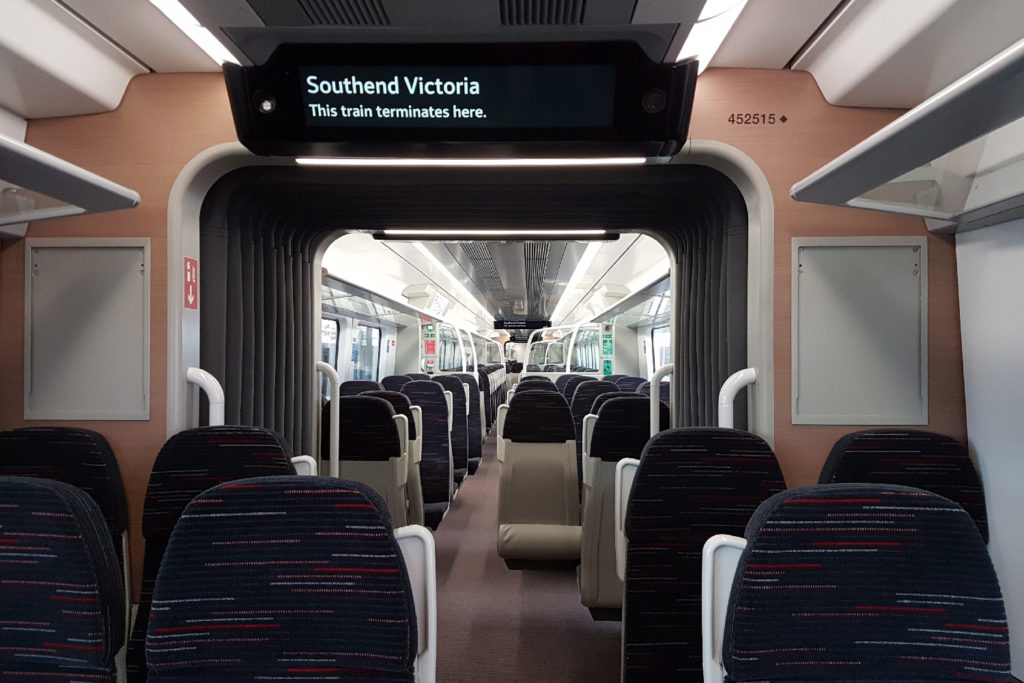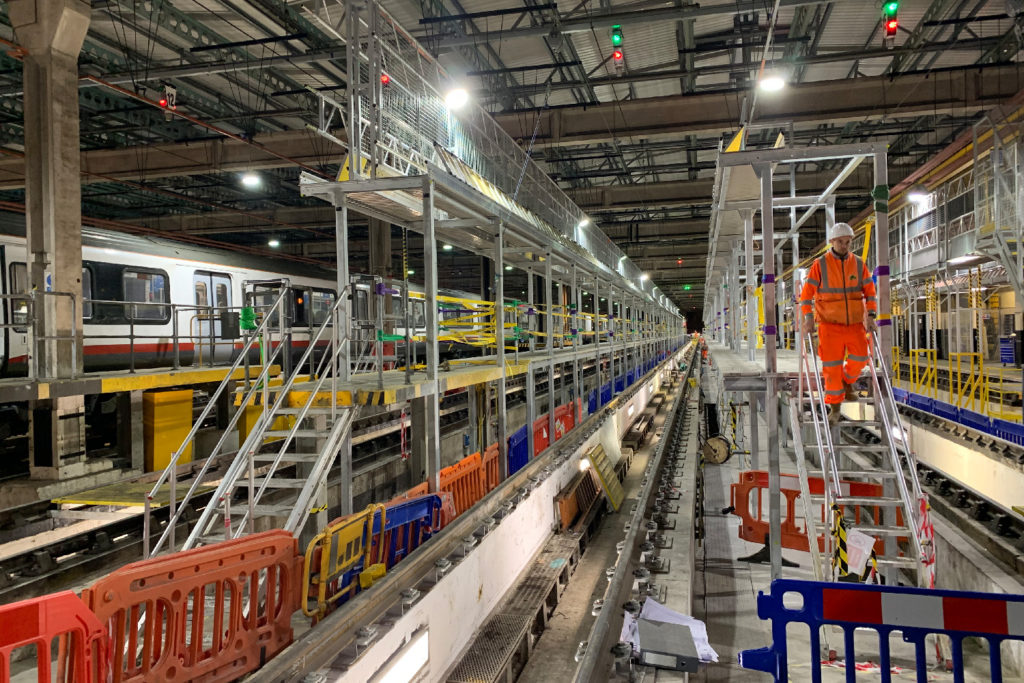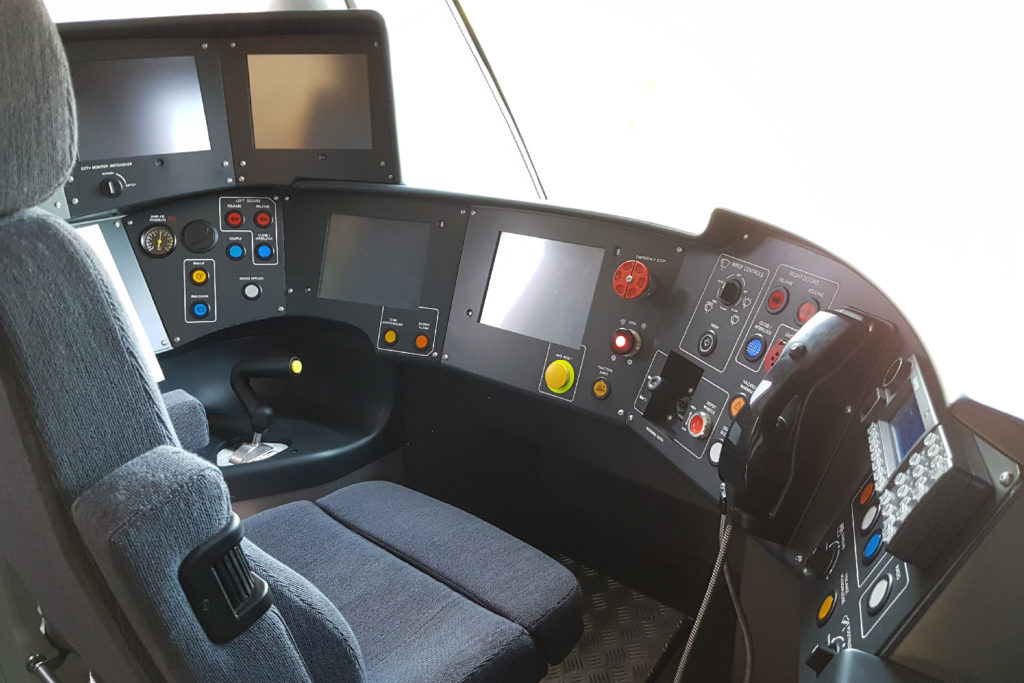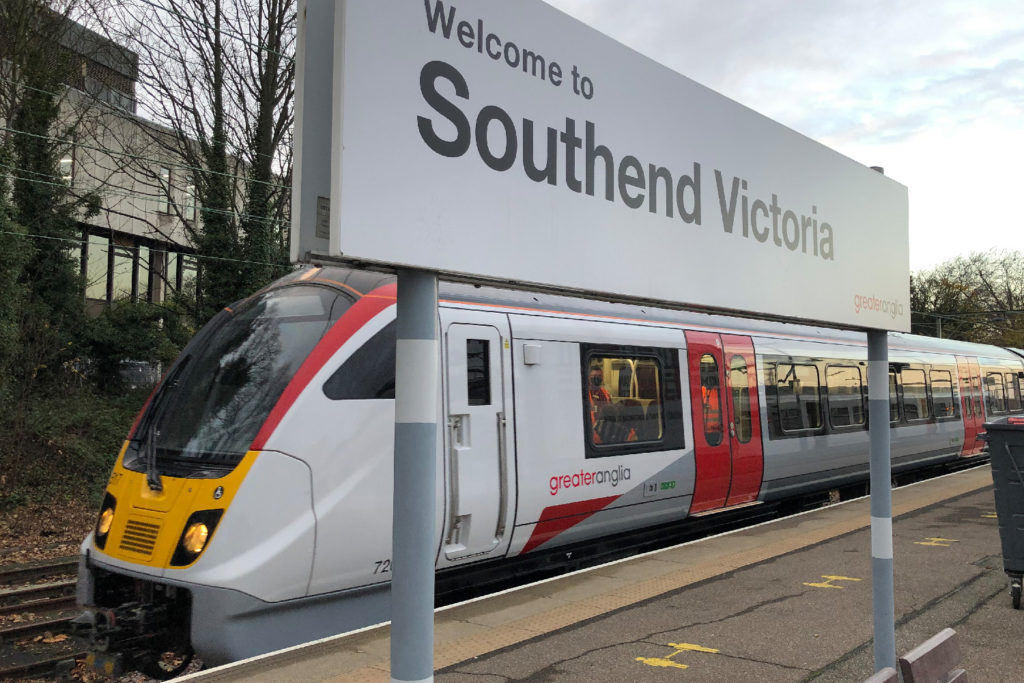Introducing Greater Anglia’s new Aventra trains into service
In August 2016 Abellio was awarded a long-term franchise to run the Greater Anglia network from October 2016 for nine years to 2025. The big surprise was the commitment to replace the entire fleet of trains between January 2019 and October 2020. This represented an investment of some £1.4 billion.
A total of 38 Stadler Flirt bi-mode trains were selected, comprising 14 three-car and 24 four-car units, for the more rural, largely unelectrified routes (Class 755/3 and 755/4). Stadler Flirt all-electric trains were selected, comprising 10 twelve-car units in all-standard-class accommodation for Stansted Express services (Class 745/1) and 10 twelve-car units with first and standard class accommodation and a bistro for the London-Norwich inter-city route (Class 745/0). These were financed by Rock Rail.
For the extensive London commuter network, 111 Bombardier Aventra trains were ordered with 89 five-car and 22 ten-car units, financed by Angel Trains. This order was flexed in mid-2020; the ten-car trains were replaced by five-car units, so the order was now for a total of 133 five-car units (Class 720/5). The number of cars – 665 – remained the same.
The Stadler trains entered service between July 2019 and December 2020. The first Bombardier train entered service in November 2020.
Some of the challenges of getting the Stadler trains into service have already been described (issue 180, December 2019), so this article concentrates on the Bombardier trains. In mid-January 2021, Rail Engineer spoke to Ian McConnell, Greater Anglia’s franchise and programmes director, about the challenges of getting the much larger Class 720 fleet into service during a pandemic.

Firstly, the basics. This is a fleet of five-car trains that can operate in five-car or 10-car formation. As the cars are 24 metres long, a 10-car train is approximately the same length as a 12-car train of three four-car units such as Class 360, which are formed with 20-metre-long cars. As a result, a 10-car train made up of two Class 720 units has some 1,080 seats, compared with 840 seats on a three-unit Class 360 train.
Moreover, the tare weight of a 10-car Class 720 train is 386 tonnes compared with 516 tonnes of a 12-car Class 360 train, a saving of some 130 tonnes. The panel describes more of the features of the Class 720.
Ian McConnell was keen to highlight the effort that Greater Anglia has put into providing comfortable seats, with passengers sitting adjacent to the bodysides having more foot space as bodyside heaters have been eliminated in favour of heated floors.
As with all modern commuter fleets, Class 720 trains feature spacious gangways, air conditioning, spaces for wheelchairs, comprehensive passenger information, Wi-Fi, power and USB sockets, as well as spaces for bicycles. They are also fully compliant with the Technical Specification for Interoperability for Persons of Reduced Mobility.
The Class 720 fleet is being maintained by Bombardier Transportation at Ilford depot under a train service agreement, and Ian McConnell said that his team has developed an excellent relationship with Bombardier.

The delays to the start of rolling out the Class 720 into service were discussed and it was clear that these were knock-on delays arising from the software issues that delayed entry into service of the London Overground Class 710 Aventra units. Ian added that software issues were still top of his list of technical challenges, although he added that the trains in service are running well and there were no technical issues that were overly concerning.
Contract variation
A fixed formation train can be very inflexible – for example, a small fault in a cab that cannot be fixed immediately causes a whole train to be lost. Moreover, the fixed formation is very demanding for maintenance facilities, not least for the wheel lathe, where a track length of twice the longest unit length is required.
Another, possibly deciding, factor arose from the lockdown in March 2020. Along with all the other passenger operators, Greater Anglia significantly reduced the service and has since adjusted the timetable several times. Indeed, services were reduced again during the drafting of this article.
Ian said that all these factors led Abellio, the Department for Transport, Angel Trains and Bombardier to review the order with a view to increasing the flexibility of the fleet, leading to an agreement to amend the order so that the 22 ten-car trains became 44 five-car units. This caused a loss of just 440 out of a total of over 72,000 seats, just under 0.6 per cent of the total across the new suburban fleet – still a massive increase in seat numbers compared with the old fleet.
Stations, depots and sidings have received some £300 million of investment to accommodate the new trains – both Stadler and Bombardier. This is in addition to the £1.4 billion mentioned above. Several platforms have been extended, there have been extensive changes to facilities at Ilford depot, to accommodate the five-car trains, in Norwich (Crown Point Depot and Victoria Sidings), at Clacton (a new lifting facility to accommodate the Stadler trains), at stabling points around the network and at stations including Sheringham, Wickford and Cambridge.
Ian was proud that Abellio had managed this infrastructure programme itself rather than the more usual model where works are delivered by Network Rail on the train operator’s behalf.
Testing
Production and testing were well under way when COVID struck, leading to the lockdown in March 2020, initially stopping both activities. Fortunately, suitable COVID-safe protocols were developed for safe working and both restarted, but with some restrictions in place with production also suffering from supply chain issues. Unlike some new train projects, Ian’s team were still able to travel to witness key activities as the overwhelming majority of testing was being carried out in the UK, especially at the Railway Industry Development Centre near Melton Mowbray. The Office of Rail and Road (ORR) issued its authorisation for Class 720 on 8 June 2020.
Training
The unique programme to replace the entire fleet led to a decision to set up a dedicated business readiness team to plan all the diagrams, rosters and other processes and ensure that everyone in the business was ready to use the new trains. Critical to this, of course, was training the train staff – drivers and conductors.
As can be seen from the photo of the cab, the driver sits centrally, and, whilst there is a seat for an instructor, it is impossible to maintain a two-metre social distance space between the driver and instructor.

Abellio worked closely with the drivers’ trades union representatives to design a practical way to train the staff. This involved creating “bubbles” of drivers and instructors, with routine testing for COVID-19 for everyone in each bubble.
Service
The first train went into service on 26 November 2020 on the Liverpool Street to Southend line. By mid-January 2020, 12 units had been accepted, of which eight were in service. The Braintree and Southminster lines have been added since November.
The plan is to gradually extend the use of the new trains to all the Great Eastern routes in Essex and on to Ipswich in the first half of 2021 and to begin on the west Anglia route between Liverpool Street and Cambridge in the second half of the year.
Eventually, Greater Anglia’s new Class 720 trains will run across the electrified parts of the Greater Anglia network including Hertford East, King’s Lynn and Cambridge to London. It will also serve Great Eastern main line destinations including Norwich, Diss, Stowmarket, Ipswich, Manningtree, Colchester, Chelmsford, Stratford and Liverpool Street, and also Braintree, Clacton and Southend to London. They will be supplemented by Stadler Class 745 trains on the London to Norwich inter-city service and on the Stansted Express service.
Ian expects all the new trains to be in service by summer 2022 but recognises that the shape of services over the next year or two is not something that is currently possible to forecast.
Thanks to Greater Anglia’s Lucy Wright for her assistance with this article.

Class 720 Key Features
Exterior / dimensions / performance:
- Five-car train mass: 193.1 tonnes
- Layout: DTLW-M3-M2-PML-DM
- Nominal car length 24 metres / train length 122 metres
- Aluminium welded, bolted bodyshells
- Bombardier FlexxEco inside-frame bogies
- Top speed: 100mph (161km/h)
- Maximum power at wheel in traction: 2,300kW per unit
- Maximum power at wheel in braking: 3,700kW per unit
- Starting tractive effort per motor: 21.6kN
- Maximum acceleration: 0.8m/s²
- Brake effort per motor: 17.0kN
Interior:
- Mostly seating will be three by two
- Seats cantilevered from the bodyside to create a clear floor for easier cleaning and storage of luggage
- Walk-through cars for easy passage from one car to another
- Air-conditioning
- Heated floors, eliminating body-side heaters that encroach into legroom
- Fast free Wi-Fi; USB and plug sockets
- Information screens on trains and stations indicate where there are empty seats
- Four cycle spaces on each five-car train
- Two toilets on a five-car train (including one accessible)
- Toilet sink waste harvested, treated and reused to flush the toilet
- Seating capacity: 540 seats on five-car train
- Seat back tables

